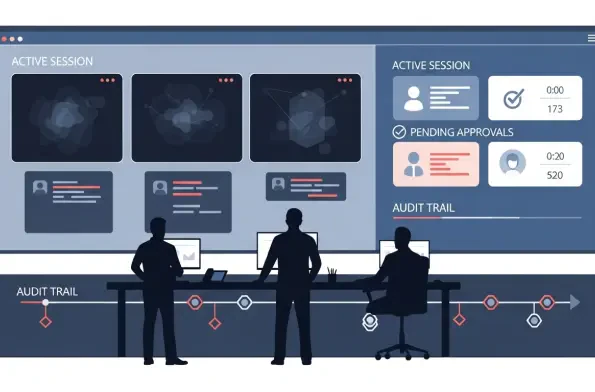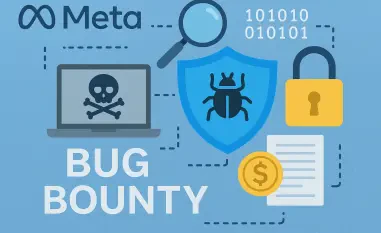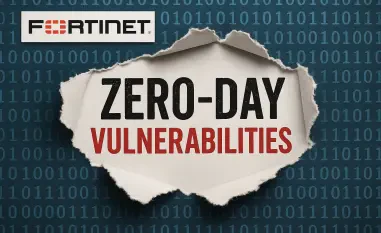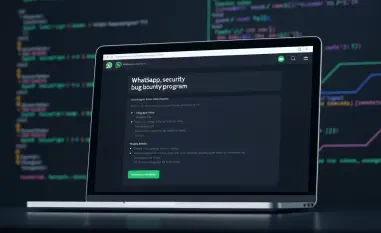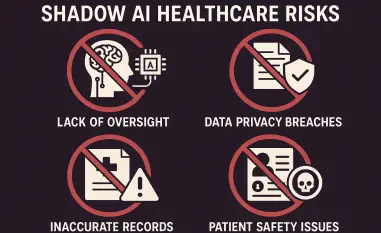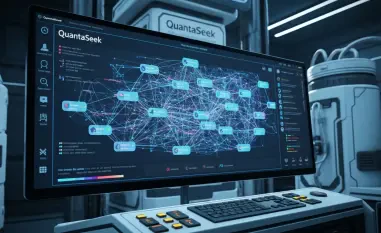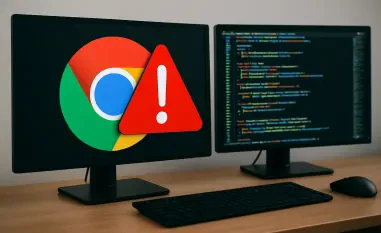Insider incidents were climbing even as audit scrutiny tightened and workforces spread across clouds, contractors, and home offices, creating a dilemma that looked unsolvable without sacrifice. Security leaders felt pushed to choose between oversight and privacy, between control and speed, and between deep evidence and workable tools. A more balanced path emerged by aligning three pillars in one motion: privacy-preserving user activity monitoring, agentless privileged access, and high-fidelity, searchable audit trails. Taken together, they offered a way to meet regulatory expectations, accelerate investigations, and protect sensitive content without bogging down teams. Syteca’s newest release served as a timely example of this pattern, not as a solitary outlier but as a proof point that design and policy could coexist. The approach prioritized just-in-time access, real-time masking of confidential data, and rich telemetry, all packaged in a cleaner interface that turned usability into a measurable control rather than a cosmetic finish.
The Insider Threat Landscape
Organizations faced a convergence of pressures that exposed the limits of legacy controls: hybrid infrastructure stretched across data centers and clouds, distributed contributors accessed systems from varied endpoints, and audits demanded tighter, more demonstrable governance. Traditional PAM often relied on endpoint agents that slowed rollouts, conflicted with device policies, and created maintenance drag, especially when contractors and vendors changed frequently. Meanwhile, user monitoring risked over-collection by capturing full on-screen content, raising red flags with privacy officers and compliance teams. Sparse logs and intermittent screenshots compounded the problem by glossing over decisive moments—an errant command, a privileged change, a data export—that determined the outcome of both incidents and audits. The friction showed most in crisis, when seconds mattered, and in audits, where a missing detail could lengthen the process or undermine confidence.
In response, a consensus formed around a more integrated model that replaced piecemeal tools with a platform mindset. Access control had to be precise, on demand, and credentialless from the user’s perspective, while monitoring had to observe behavior without revealing protected data. Evidence needed to be complete and immediately searchable, not assembled after the fact from low-signal artifacts. Syteca illustrated this direction by offering browser-based RDP and SSH sessions that hid secrets via a vault, combined with real-time on-screen masking and full-motion session capture. However, what stood out was not novelty but fit: the design aligned with how teams actually worked—remotely, collaboratively, and under audit pressure. That alignment reduced operational overhead and made security feel less like a barrier and more like a shared service that enabled productivity without compromising oversight or privacy.
Privacy-First Monitoring
Privacy-first monitoring reframed oversight from collecting everything to collecting what mattered, then shielding whatever must not be seen. Real-time masking addressed the core tension by detecting sensitive elements such as passwords, Social Security numbers, and payment data and blurring them at capture and during playback. Analysts could reconstruct actions and intent without viewing confidential content, reducing exposure risk and easing concerns under GDPR, HIPAA, and PCI DSS. This approach also hardened defenses against accidental leaks, since masked artifacts did not propagate into tickets, shared clips, or exported evidence. More importantly, it restored trust: employees and contractors still operated under fair oversight, but their personal data and customer information remained protected in both live review and historical records. The net effect was visibility with guardrails, not surveillance without boundaries.
Execution quality determined whether the promise held up. Syteca’s system leaned on pattern detection and context to identify sensitive fields and on-screen regions, then applied masking in real time, including during screen shares and session streaming. That nuance mattered during investigations, where teams could pause and search without revealing underlying values. Equally vital was the ability to tune policies: some workflows demanded looser masking for specific roles, while others enforced stricter blurring based on application context. The design avoided binary trade-offs by letting privacy policies travel with the session, regardless of endpoint or network. When combined with immutable logs that recorded what was masked and why, the approach gave audit teams a transparent narrative: behavior was visible, content was protected, and controls were consistently applied. Such clarity met regulatory expectations and calmed stakeholders wary of overreach.
Agentless Privileged Access
Agentless privileged access shifted the burden from endpoints to a secure, browser-based connection manager, where users launched RDP and SSH sessions without ever handling raw credentials. A vault brokered secrets at session start, injected them into the target, and kept them out of reach from users and endpoints, reducing both theft risk and convenience-driven workarounds. This model shortened deployment cycles, especially for contractors and temporary staff, since there were no agents to install, patch, or troubleshoot across diverse devices. It also made just-in-time access practical: approvals granted time-bound entry to systems, after which privileges expired automatically. In fast-moving environments, the difference was tangible—onboarding accelerated, offboarding simplified, and the administrative drag of managing agents fell away without sacrificing control.
Syteca’s web connection manager showcased how agentless flows could coexist with existing identity stacks and vaults, reducing change management and leveraging what teams already trusted. Role- and policy-based controls applied consistently whether access originated from headquarters or a home network, and session policies followed the user into the target, enabling concurrent monitoring and masking strategies. Because sessions ran through the same broker, revocation was immediate and auditable: an approval record linked to a session recording and an access decision trail. That triangulation tightened the loop between identity, authorization, and observation. It also neutralized a classic source of error—credential sprawl—by centralizing secrets and keeping them server-side. The result was fewer support tickets, fewer risky exceptions, and a cleaner path to demonstrate least privilege during audits.
High-Fidelity Evidence for Investigations
Sparse evidence put investigators in a bind: low-frequency screenshots and fragmented logs could not reliably answer who did what, when, and with what effect. Full-motion session capture changed the calculus by recording the entire interaction—windows opened, commands executed, forms submitted—while indexing key artifacts such as URLs, process names, keystrokes, and shell output. Searchable metadata let analysts jump directly to moments of interest, cutting triage times and reducing guesswork. Alerts keyed to sensitive actions—privilege escalation, configuration changes, data export—could route teams to the precise timestamp in the recording. Compared with static evidence, the combination of motion and context produced stronger attribution and faster root-cause analysis, which in turn shortened incident lifecycles and refined detection rules for the next event.
Syteca’s implementation underlined the importance of coherence between capture quality and usability. Recordings preserved fidelity without flooding storage, and indexing remained responsive under load so the first query did not stall while pressure mounted. Crucially, masked content stayed masked in the recording, preventing inadvertent disclosure during collaboration. Investigators could annotate segments, attach them to tickets, and export audit packs that included the video slice, the metadata excerpt, and the policy context that governed masking and access. That package supported both internal reviews and external audits by tying together the who, the what, and the why. In practice, high-fidelity evidence became more than a forensic aid; it provided a continuous feedback loop for access policies, detection thresholds, and training, turning each investigation into an input for smarter prevention and leaner response.
The Insider Threat Landscape
Usability As A Security Control Even the strongest features faltered if the console buried signals in clutter or forced analysts through labyrinthine workflows. Interface clarity lowered cognitive load, reduced click paths, and helped responders find the right control at the right time, especially during noisy incidents. A decluttered layout that prioritized anomalies, pending approvals, and policy conflicts made daily work faster and less error-prone. It also shortened ramp-up time for new team members and outside auditors, who needed to navigate without tribal knowledge. When screens surfaced context—recent alerts, related sessions, user risk indicators—decisions became faster and more consistent across shifts. In effect, usability turned into a measurable control: fewer misclicks, fewer missed alerts, and tighter mean time to resolution.
Syteca’s redesign backed this principle by elevating high-value context while preserving familiar workflows, demonstrating that usability and rigor could coexist. Navigation grouped tasks by outcome—grant access, review evidence, tune policies—rather than by internal module names, reflecting how work actually happened. Search behaved like an investigation companion, accepting free-form queries across users, assets, commands, and alerts, then offering filters aligned to audit needs. Moreover, the console tracked reasoning with lightweight notes and tags that stayed attached to evidence, creating a durable narrative for later review. Usability improvements also extended to policy creation, where plain-language builders and previews reduced risky misconfigurations. The cumulative effect was not cosmetic polish but a reduction in operational friction that translated into better security outcomes.
Converging PAM And UAM
A converged model that joined privileged access management and user activity monitoring delivered guardrails and insight in one workflow. Instead of stitching together tools that controlled entry and tools that observed behavior, a unified platform linked policy, session, and evidence. Access rules defined who could go where and when, while monitoring documented what happened once inside, with sensitive content shielded by masking. This convergence also simplified governance: a single policy engine enforced least privilege and privacy requirements consistently across systems and sessions. The result was fewer integration gaps, more consistent enforcement, and a clearer story for auditors who asked to see both authorization decisions and the activity that followed. It also curbed tool sprawl, easing procurement and training burdens for lean teams.
Syteca exemplified the convergence by tying just-in-time, agentless access to full-motion, masked monitoring and searchable metadata. Approvals left an audit trail that linked directly to session recordings, and policy outcomes were visible next to evidence, eliminating the back-and-forth that often slowed reviews. Importantly, convergence did not mean over-collection: masking remained active throughout, and retention policies governed both video and metadata according to regulatory and business needs. As teams adopted the pattern, they found that visibility and privacy could reinforce each other rather than compete. Investigations became faster because the right evidence was at hand, and compliance grew simpler because controls were consistent by design. That alignment reframed insider defense as a continuous, privacy-first process rather than a set of tactical compromises.
Practical Considerations
Successful adoption depended on rigorous validation. Masking accuracy had to be tested with real applications to catch edge cases and prevent both over-redaction, which could obscure relevant actions, and under-redaction, which could expose sensitive data. Integration with identity providers and vaults needed to be smooth, with clear fallbacks and minimal latency in session start. Performance under load mattered: indexing and search should stay responsive as recordings multiplied. Alert logic benefited from tuning; noise eroded trust, while targeted triggers guided investigators to the moments that mattered. Finally, retention and export policies required alignment with legal and internal standards, ensuring evidence remained usable without inflating risk. Syteca’s release addressed these points in design, yet each environment demanded its own proof.
The path forward favored incremental rollout: start with agentless access for a high-impact system, turn on masked monitoring with conservative policies, then expand coverage as confidence grew. Train analysts on search and alert workflows while measuring time-to-access, time-to-evidence, and false-positive rates. Use findings to refine approvals, masking scopes, and alert thresholds. Fold audit feedback into policy templates so repeat reviews moved faster with less rework. By treating privacy, simplicity, and evidence depth as coequal goals and testing them in real workflows, teams had charted a practical route to stronger insider defense. The strategy also positioned programs to adapt as regulations evolved and work patterns shifted, keeping oversight effective, respectful of privacy, and ready for the next investigation.
